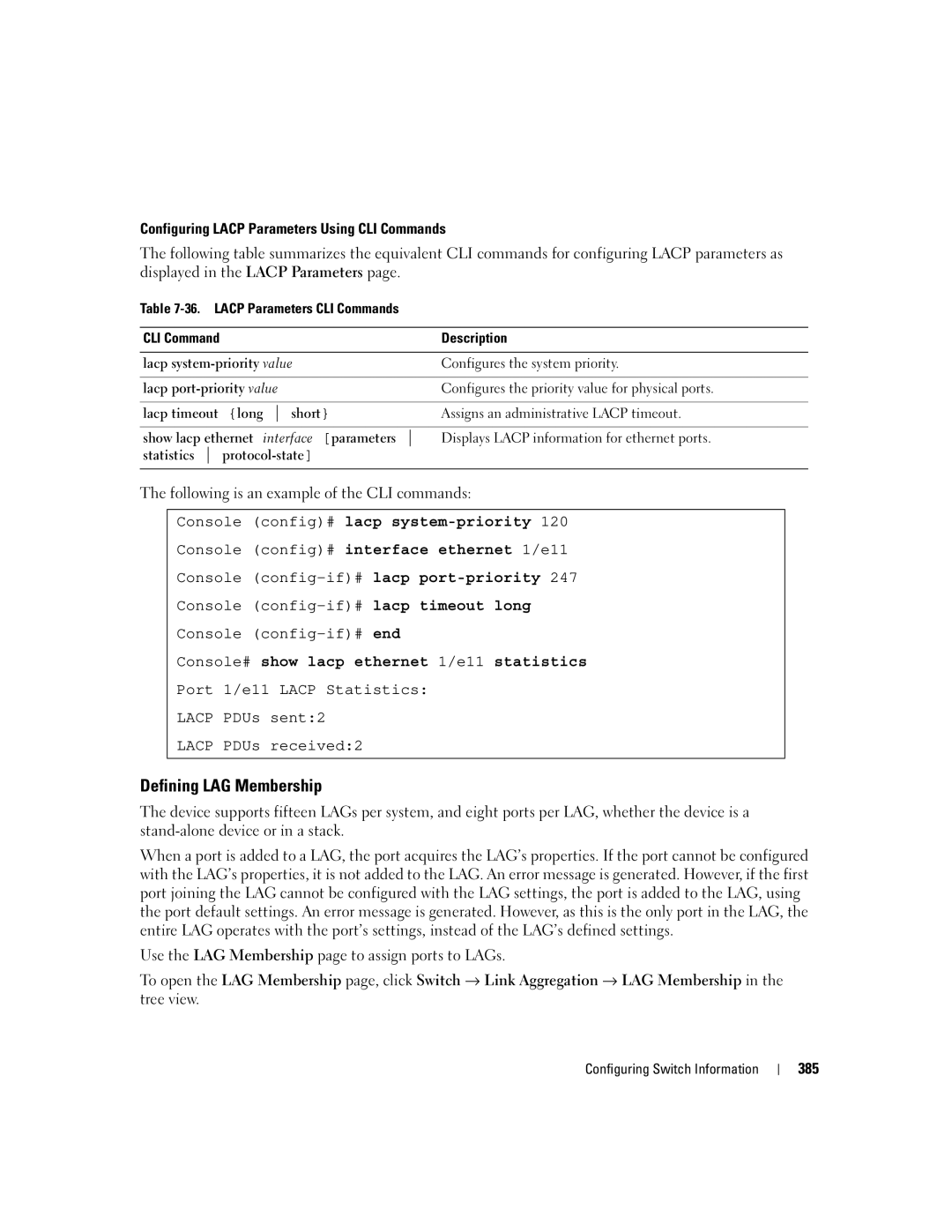
Configuring LACP Parameters Using CLI Commands
The following table summarizes the equivalent CLI commands for configuring LACP parameters as displayed in the LACP Parameters page.
Table
CLI Command |
| Description |
|
| |
lacp | Configures the system priority. | |
|
| |
lacp | Configures the priority value for physical ports. | |
|
|
|
lacp timeout {long | short} | Assigns an administrative LACP timeout. |
|
|
|
show lacp ethernet | interface [parameters | Displays LACP information for ethernet ports. |
statistics
The following is an example of the CLI commands:
Console (config)# lacp
Console (config)# interface ethernet 1/e11
Console
Console
Console
Console# show lacp ethernet 1/e11 statistics
Port 1/e11 LACP Statistics:
LACP PDUs sent:2
LACP PDUs received:2
Defining LAG Membership
The device supports fifteen LAGs per system, and eight ports per LAG, whether the device is a
When a port is added to a LAG, the port acquires the LAG’s properties. If the port cannot be configured with the LAG’s properties, it is not added to the LAG. An error message is generated. However, if the first port joining the LAG cannot be configured with the LAG settings, the port is added to the LAG, using the port default settings. An error message is generated. However, as this is the only port in the LAG, the entire LAG operates with the port’s settings, instead of the LAG’s defined settings.
Use the LAG Membership page to assign ports to LAGs.
To open the LAG Membership page, click Switch → Link Aggregation → LAG Membership in the tree view.
Configuring Switch Information
385
